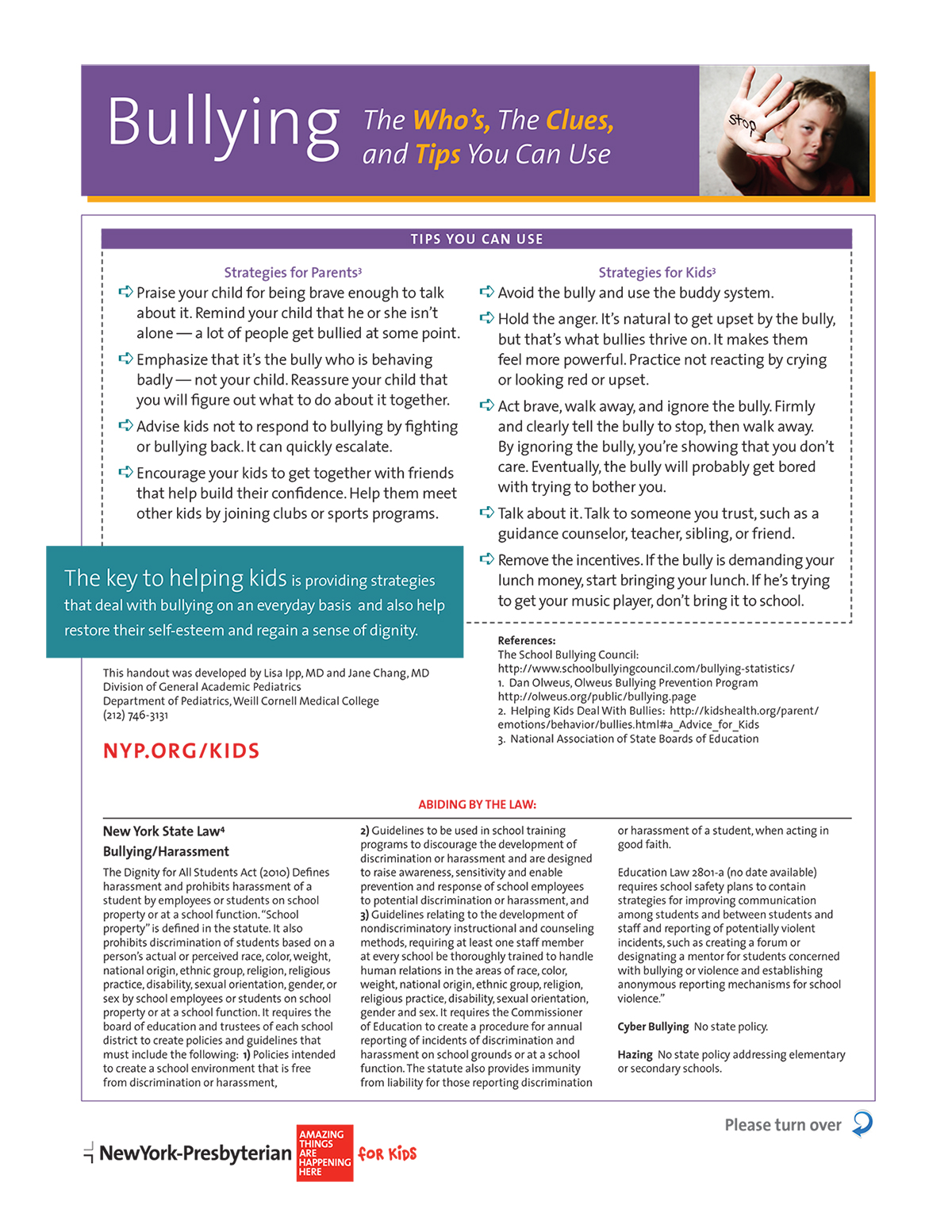Bullying: The Whos, The Clues, and Tips You Can Use
The Who’s
The five states with the highest rates of reported bullying instances for kids in grades K through 12 are1:
- California
- New York
- Illinois
- Pennsylvania
- Washington
77% of all students in grades K through 12 have been bullied at some point in their lives.
Of those children, 14% claimed to have experienced severe reactions to their ordeal.
About 90% of children in grades 4 through 8 have reported incidents of being bullied.
23% of students in elementary school report bullying incidents on a regular basis. The incidence of fighting is typically twice as high in the lower grades.
It is estimated that more than half of school bullying incidents are never reported.
Why Students Become Bullies2
Students who bully...
- have strong needs for power and (negative) dominance
- find satisfaction in causing injury and suffering to other students.
- are often rewarded in some way for their behavior with material or psychological rewards.
Types of Bullying2
- Verbal bullying including derogatory comments and bad names
- Bullying through social exclusion or isolation
- Physical bullying such as hitting, kicking, shoving, and spitting
- Bullying through lies and false rumors
- Having money or other things taken or damaged by students who bully
- Being threatened or being forced to do things by students who bully
- Racial bullying
- Sexual bullying
- Cyber bullying (via cell phone or Internet)
The Clues3
- Your child may act differently than normal
- Seem anxious
- Changes in sleeping habits
- Moody or more easily upset
- Avoidance of certain situations
Kids that are bullied are often embarrassed, feel that they are to blame, and/or are afraid that telling an adult would result in worsening the situation.
Tips You Can Use
Strategies for Parents3
- Praise your child for being brave enough to talk about it. Remind your child that he or she isn’t alone — a lot of people get bullied at some point.
- Emphasize that it’s the bully who is behaving badly — not your child. Reassure your child that you will figure out what to do about it together.
- Advise kids not to respond to bullying by fighting or bullying back. It can quickly escalate.
- Encourage your kids to get together with friends that help build their confidence. Help them meet other kids by joining clubs or sports programs.
The key to helping kids is providing strategies that deal with bullying on an everyday basis and also help restore their self-esteem and regain a sense of dignity.
Strategies for Kids3
- Avoid the bully and use the buddy system.
- Hold the anger. It’s natural to get upset by the bully, but that’s what bullies thrive on. It makes them feel more powerful. Practice not reacting by crying or looking red or upset.
- Act brave, walk away, and ignore the bully. Firmly and clearly tell the bully to stop, then walk away. By ignoring the bully, you’re showing that you don’t care. Eventually, the bully will probably get bored with trying to bother you.
- Talk about it. Talk to someone you trust, such as a guidance counselor, teacher, sibling, or friend.
- Remove the incentives. If the bully is demanding your lunch money, start bringing your lunch. If he’s trying to get your music player, don’t bring it to school.





